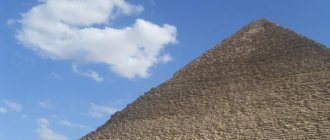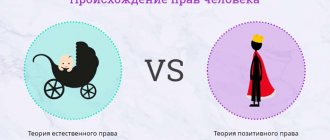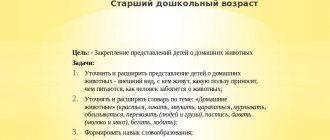Lesson - game Ancient Egypt
Progress of the game
Dear participants and spectators! We are glad to welcome you to the game dedicated to Ancient Egypt - a country where pyramids were built and great pharaohs ruled, bloody wars were fought and magnificent works of art were created.
Team presentation.
Before the game begins, teams must present us with their name and motto in ancient Egyptian style.
Competition 1. One of three.
The competition is held in test form. Of the three answer options, you need to choose one - the correct one - and mark it on the card. For each correct answer the team receives 1 point.
1. The Egyptians dug canals to:
a) to escape the scorching heat in them; b) irrigate fields remote from the Nile; c) contain sacred crocodiles in them.
2. The Sphinx is:
a) a fantastic creature with the body of a lion and the head of a man or ram; b) a dinosaur that is found in southern Egypt; c) a fantastic creature with the body of a man and the head of a bull.
3. Bronze is:
a) an alloy of gold and silver; b) an alloy of copper and zinc; c) an alloy of copper and tin.
4. The walls of the tomb of an Egyptian nobleman were decorated with inscriptions, drawings and reliefs, because the Egyptians:
a) loved art and appreciated everything beautiful; b) believed that all the images would miraculously come to life in the afterlife; c) believed that the tomb of a nobleman should be different from the grave of an ordinary person.
5. Pharaoh appointed a nobleman to wear the royal sandals:
a) if you were angry with him; b) as a sign of special favor; c) from among the youngest courtiers.
6. The hieroglyph (a circle with a dot in the center) means the word:
a) shield; b) pharaoh; c) sun.
7. Foreign warriors captured by the Egyptians were called:
a) mercenaries; b) barbarians; c) killed alive.
8. The following were enrolled in the Egyptian army:
a) all adult men; b) every tenth youth; c) only mercenary warriors.
9. The ancient Egyptians believed that the human mind was located:
a) in the head; b) in the heart; c) in the liver.
10. If an ancient Egyptian took an oath, then he swore:
a) the nose, because the nose inhales air, and the god of air is the god of life; b) eyes, because eyes are the mirror of the soul; c) the heart, because it was believed to contain the human mind.
Competition 2. Parcel from Egypt.
Captains are invited to participate in the competition. Imagine that you are the ruler of a state that wants to make peace with the Egyptian pharaoh. From Egypt they send you a colorful box with a sacred object enclosed inside. If you guess what is in the box, you are guaranteed a peace treaty.
You will be given 5 hints. The fewer hints you use, the higher the score you earn. As a last resort, the captain can ask the crew for help. The minimum number of points for the competition is 1, the maximum is 5.
Tips for the first captain:
- it was dedicated to the goddess Isis and her husband Osiris;
- in its middle the sun god was born;
- his images adorned the walls of temples and tombs and the capitals of columns;
- it comes in pink, white and blue;
- its flower was the emblem of Upper Egypt.
Answer: lotus.
Tips for the second captain:
- Farmers were the first to honor them;
- they had their own goddess - a good deity of love, fun, music;
- the sun god Ra, in a difficult battle, took the form of one of them;
- in the 15th century BC, the pharaoh forbade the Egyptians from keeping them, reserving this privilege only for himself;
- their ancient Egyptian name is "miu".
Answer: cat.
Competition 3. Restoration.
In this competition, teams will have to prove themselves as artists and experts on religion. During a natural disaster, images of gods were damaged in Egyptian temples. What a horror - they don’t have enough faces! Restore the images and tell us whose heads the gods had, and what role did these gods perform? Each command restores two images. The maximum number of points for the competition is 4.
- Anubis is the god of the dead and embalming. Depicted with the head of a jackal.
- Horus is the son of Isis and Osiris, the god of the rising sun, the divine ruler of Egypt. Depicted with the head of a falcon.
- Thoth is the god of wisdom, the creator of ancient Egyptian writing. Most often depicted with the head of an ibis.
Competition 4. Some Egyptians did not work in the fields and gardens or raise livestock. They were artisans. The work of artisans was considered more difficult than the work of landowners. Copper workers smelted copper. Their work was not easy, and the blacksmiths' tools were primitive. To maintain the required temperature in the melting furnace, they blew into it through long tubes. This is a very dangerous occupation, and often the person who blew into the pipe died at his workplace. That is, blacksmiths had to have strong lungs. Now we will check which of you has the strongest lungs. One participant from the team is called to the board, they are given balloons, which they will have to inflate until the balloons burst. (the winner gets another piece of the mummy).
Competition 5. Mummy.
Competition 4.
- King of Ancient Egypt (Pharaoh).
- A plant whose stems were used to make writing material (Papyrus).
- Ancient Egyptian writing sign (Hieroglyph).
- Tomb of the Egyptian Pharaohs (Pyramid).
- What continent is Egypt on? (Africa).
- Capital of the Ancient Egyptian Kingdom (Memphis).
- A place in the desert where there is vegetation and water (Oasis).
- The sun god of the ancient Egyptians (Ra).
- This was the name of the ancient Egyptian god of the desert, the enemy of Osiris. (Set).
- A building where people worshiped gods (Temple).
- Ancient Egyptian pharaoh, for whom the largest pyramid was built (Cheops).
- The Egyptians called him “the father of terror”; his twenty-meter statue with the face of a pharaoh really inspired fear in them (the Sphinx).
- When did the Egyptians begin to build a tomb - while the person was alive or after his death? (In life).
- What color clothes did the ancient Egyptians most often wear and why? (White to escape the scorching rays of the sun).
- It might not be wise to wear two hats at once, but one ancient Egyptian did just that. What kind of headdresses are these? (Crowns of Upper and Lower Egypt).
- The most prestigious profession in Ancient Egypt.
Summing up, rewarding teams.
Repeating and generalizing lesson on the topic: Ancient Egypt (grade 5)
Lesson outline diagram
Profession (specialty) teacher of history and law with an additional specialty of jurisprudence
Professional module (academic discipline) history
Teacher Natalya Mikhailovna Chernopazova
Name of educational institution Municipal budgetary educational institution "Secondary school No. 37"
Summary (project) of the lesson (lesson)
Topic: Ancient Egypt
Goals and objectives:
Goal: To summarize and consolidate students’ knowledge on the topic “Ancient Egypt”
Tasks:
Educational:
- To consolidate knowledge about the natural conditions of Ancient Egypt, location, about the life of farmers, artisans, Egyptian nobles, about the religious beliefs of the ancient Egyptians, about ancient Egyptian culture and knowledge;
Educational:
- To cultivate a sense of beauty, a sense of respect for those people who created masterpieces of world culture;
- Foster respect for the history and traditions of Ancient Egypt
Educational:
- To develop the ability to reveal the content of an illustration;
- Give an independent assessment of events and personalities;
- Express your own opinions, analyze historical sources, read a historical map.
Location of the lesson: MBOU "Secondary School No. 37"
Lesson duration: 40 minutes
Material and technical support for the lesson: interactive whiteboard, computer, projector
Methodological and didactic support for the lesson: textbook “History of the Ancient World” for grade 5, Kolpakov S.V., Selunskaya N.A., historical map “Ancient Egypt”, documents, illustrations, atlases.
Type of lesson: repeating and generalizing lesson
Student activities
Teacher's activities
Note
1. Organizational moment
Students take their seats and check their readiness for the lesson.
Introductory word: Hello guys! When I went to your lesson today, it was light fluffy snow. Have you noticed how easily and quietly snowflakes fall from the sky to the ground? Let us also quietly take our places.
Students express their assumptions about the goals and objectives of the lesson.
Introductory conversation: Guys, pay attention to the topic of our lesson (the lesson topic “Ancient Egypt” is indicated on the interactive board) and think about what questions on this topic we will answer.
Setting goals and objectives: Over the course of several lessons, we have studied the history of the emergence of the state in Ancient Egypt, examined the social structure in the Egyptian state, and got acquainted with the culture of Ancient Egypt. Today in class, we must summarize and consolidate all the knowledge gained on this topic.
2. Lesson content
Students work individually with the atlas. They answer the question posed, working at the board with an electronic map, and prove that the main factor in the emergence of the state was agriculture.
Test conversation, work with a map: Look at the map of Ancient Egypt, think and name the prerequisites for the emergence of a state among the ancient Egyptians?
Students answer the question posed.
Test conversation: Indeed, from history we know that the states of the Ancient East were formed where agriculture became the main occupation. Guys, what conditions are necessary for the development of agriculture?
Working with an interactive whiteboard involves taking turns performing tasks at the board.
Working with an interactive whiteboard:
(the task is an establishment of correspondence - the words are randomly presented on the screen: Nile Spills, Equator, Sun, Moisture, Silt, Soil, you need to correctly formulate a phrase according to its meaning, justifying your answer).
An artistic story by students about the floods of the Nile. (The climate of Egypt is hot, dry, there is practically no rain here. The only source of moisture for the fields of farmers was the waters of the Nile, the Nile flooded once a year from July to November, the rest of the time it was necessary to water the crops, drawing water from rivers Over time, people learned to dig canals through which river water flowed to the fields, this system was called irrigation).
Frontal survey: From previously studied material, we know that people inhabited the Nile Valley many thousands of years ago.
1. Why do you think people settled in the river valley? Nile?
2. Guys, how many times a year did the Nile flood and at what time?
3. How was moisture maintained the rest of the time?
An artistic story by students about the organization of work of the ancient Egyptians using an electronic map. (to build canals, several rural nome communities had to unite, led by a nomarch; after a long struggle, the nomes of the Nile Delta united into Lower Egypt (working with the map), at the same time Upper Egypt was formed in the south (working with a map).
Test conversation: Do you think building an irrigation system is hard work? What did the Egyptians do to make hard work easier?
Students complete tasks on the map; in parallel, students work in atlases
Working with an electronic card:
1. Mark the location of Lower and Upper Egypt on the map?
2. What is the date of the unification of Upper and Lower Egypt?
3. Mark the capital of united Egypt on the map?
Generalization: So, in 3 thousand BC. the powerful state of Ancient Egypt was formed, which stretched from the rapids of the Nile in the south to the Mediterranean Sea in the north. Its capital was the city of Memphis.
Fiction story:
Egypt is a well-organized state. For many centuries its structure has not changed. Each person occupied his place in society and differed from others in his responsibilities and rights.
Students working with an interactive whiteboard
The interactive board shows a diagram - a pyramid “Structure of society in Ancient Egypt”. You need to arrange the figures correctly:
· Pharaoh
· Nobleman
· Scribe
· Farmer
· Slave
Using the diagram, talk about what place they occupied in society.
1.






